European Union (EU) legislation - A quick guide
 Certified Article
Certified Article
The content of this article is certified for accuracy by the Digital Accessibility Centre.
The European Accessibility Act (EAA)

It is estimated that over 100 million people are living with some form of disability or impairment in the European Union (EU), and many Member States have previously adopted their own accessibility legislation. This has led to issues being caused by the separate guidelines that are in place across these States. At times, these guidelines have clashed with each other causing more issues than they have solved.
The European Accessibility Act (EAA) aims to improve the way that products and services are provided across the EU by making accessibility guidelines the same for all EU Member States. From June 28th, 2025, newly marketed products and services covered by the EAA must be accessible.
It is designed to help people with disabilities and the elderly, ensuring that everybody has the same access to key products and services so that they can take part equally in all areas of society.
Some of the main products are:
· Computers and operating systems
· smartphones
· e-readers
· cash machines
· interactive kiosks.
Services include, but are not limited to:
· Websites and e-commerce
· banking services
· transportation
· e-books and dedicated software
· ‘112’ European emergency number calls.
It is important to note that there are some restrictions in place, and that the legislation will not apply to websites or other forms of archive materials that have not been updated or edited after June 28th, 2025. The same applies to pre-recorded videos published before this date.
The EAA only sets out the functional requirements of the services and products, meaning which parts need to be accessible, it does not outline the technical requirements of how they will be made accessible. This is because doing so would limit the solutions to future accessibility barriers, and by keeping the options open further innovation is possible.
There are some specific accessibility requirements for services, such as providing information about the service, its facilities, and accessibility features, as well as applying strategies and actions to address the needs of people with disabilities or impairments.
Websites, smart TV apps, mobile apps, and the like must be able to be accessed by people using assistive technologies.
When it comes to travel via various forms of transportation, information available through interactive screens, mobile services, websites, and kiosks must not just be accessible, but accessible in real-time. This includes information during the journey, alerts for cancellations or delays, up to date timetables, and prices or promotions.
Financial services, such as online banking and apps, will also need to be fully accessible, although the finer points of how these services will be made accessible were yet to be decided as of late 2022.
E-commerce is a huge area to cover, and although the wording is somewhat vague, in simple terms it is understood that under the EAA all online sales of any product or service will be expected to be accessible to the elderly and those relying on assistive technologies.
It is anticipated that following WCAG 2.1 level AA will be enough to comply with the EAA, but this has yet to be confirmed officially and WCAG has not been mentioned so far.
The EAA will go beyond web accessibility regulations that are already in place. Websites should already be accessible to all users in terms of navigation and content. The EAA means that websites will need to provide accessible channels for online customer support, ensure all video content has closed captions, and images have alternative text.
Where these measures are implemented, users with disabilities and the elderly should have better access to products and services, fewer barriers to transportation, education, and the open labour market, and improved job availability where accessibility expertise is needed.
Changes made to the way services and products are designed and accessed will not only benefit people with disabilities or age-related issues. All users will gain from the improvement in accessibility.
European Directive (EU) 2016/2102
Numerous European Union (EU) states have enacted national legislation to implement the Web Accessibility Directive (WAD). The WAD mandates public sector websites, mobile applications to comply with accessibility requirements, including providing an accessibility statement. The directive seeks to promote equal access to digital information and services for all citizens irrespective of their abilities. As part of this effort, the WAD requires member states to ensure that their public sector websites and mobile apps meet the accessibility standards set by the European Standard on Accessibility Requirements for Public Procurement of ICT products and services (EN 301 549). The WAD's enforcement is expected to result in a more inclusive digital environment for people with disabilities, enhancing their ability to engage with public digital services.
For organisations that function in the European Union, it is highly recommended that they publish an accessibility statement that adheres to both the Web Accessibility Directive (WAD) requirements and the local accessibility laws.
Unlike the European Accessibility Act which deals with private sector bodies, the Web Accessibility Directive aims to make mobile applications and public sector websites more accessible, as well as harmonising standards within the EU.
Although the Directive does not automatically become law in all EU Member States, it does require the States to adopt its content into their respective national laws.
The objective of this is to reduce the barriers faced by developers of products and services, and by doing so provide better access to online public services for people with disabilities and the elderly.
Under the Directive, public sector bodies are required to ensure their websites and mobile applications are perceivable, operable, understandable, and robust. These are the four main principles of WCAG.
The reasoning behind this is that while WCAG guidelines are highly respected and universally acknowledged, they are not enforceable on their own. By making the principles part of the Web Accessibility Directive, the EU is officially requiring all Member States to abide by WCAG 2.1 Level AA standards.
While the core of the Web Accessibility Directive is WCAG 2.0, the Directive itself does not include any specific rules for websites and apps to follow in order to be compliant. To find out more about these rules, you should refer to Standard EN 301 549, which itself cites WCAG 2.1 for further clarification.
It is important to note that later versions of this Standard may have requirements that are not included in, or go further than, WCAG 2.1.
A link to the most recent version of Standard EN 301 549 and additional information can be found in the text portion of this lesson.
Member States can go beyond what is set out for the minimum requirements for accessibility as outlined in the Directive. If there are better solutions already in place in a State, then they do not need to be amended.
There are some exceptions from the Directive including online maps and mapping services, live video and streaming, and third-party content that is not under the control of the public body.
The following is expected under the Directive:
· An accessibility statement for each website and mobile app.
· A feedback mechanism so that users can flag accessibility issues or request access to inaccessible content.
· Regular monitoring of public sector websites and mobile apps plus reports by member states.
In addition to this, the United Nations Convention on the Rights of Persons with Disabilities has been agreed to by the EU, including all EU Member States, and they are now committed to taking measures that ensure equal access to ICT and the internet for people with disabilities.
Designing for accessibility also means that those with age-related issues are considered. As with the European Accessibility Act, under the Web Accessibility Directive the elderly must be taken into account when considering website and mobile app design. Many age-related issues are also seen as disabilities, for example, low vision, mobility impairments, hearing impairments, and cognitive issues such as memory loss.
Incorporating accessibility into your design from the start has a positive impact on all users, not just those with disabilities. By making your website or mobile app as accessible as possible, you will reach the widest range of users.
For businesses operating in the EU, I often recommend publishing an accessibility statement that meets both WAD requirements and local accessibility laws. This might mean adding sections or appendices for each EU country (written in their language), documenting compliance efforts and consulting experts to ensure full compliance.
European Union (EU) legislation - A quick guide was posted on 22/04/2024 @ 16:02
